|
|
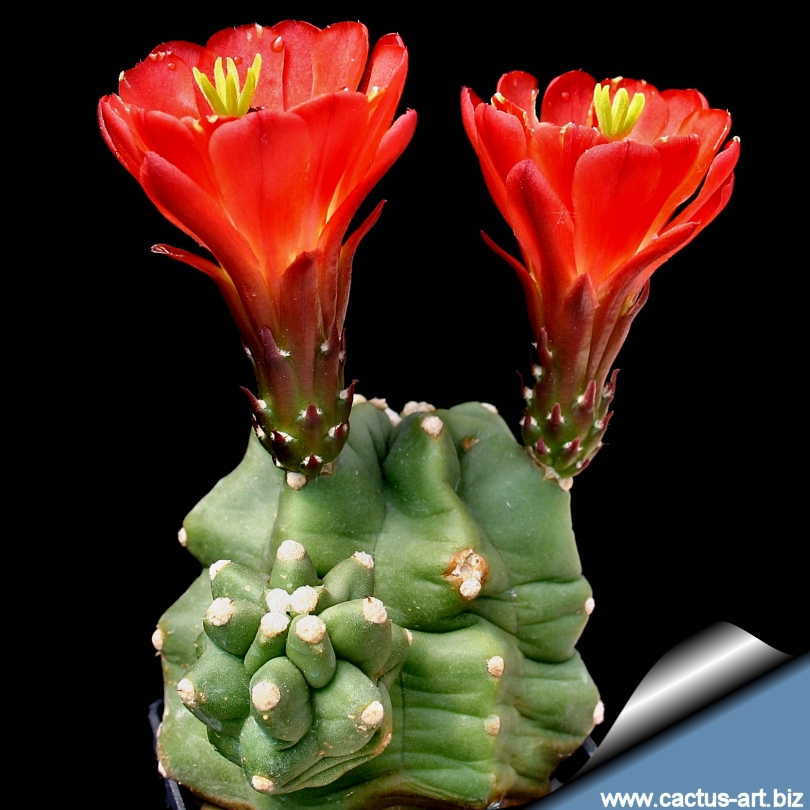
The varietal name ‘inermis’ means unarmed (referring to the lack of
spines), which as you can see in the close-ups is not entirely true, but
almost, especially when compared to the other varieties.
|
|
Description:
This is a spineless form (without or with very short
spines) in the wild plants with 1 to 7 spines and the spineless form are
equally common.
The spineless form of E. triglochidiatus (and of
E. triglochidiatus var. mohavensis ) is called var.
inermis by some (Echinocereus triglochidiatus
var. inermis (K.SCHUM.) G.D.ROWLEY 1973) though it
occurred with the normal and intermediate forms.
A particularity of this plant is that the flower buds emerge
through the plant's skin above an areole, leaving a scar after fading,
rather than arising from areoles or axils between areoles as in other
cacti. The heavy and waxy flowers are red or orange with green stigma in
the centre.
|
|
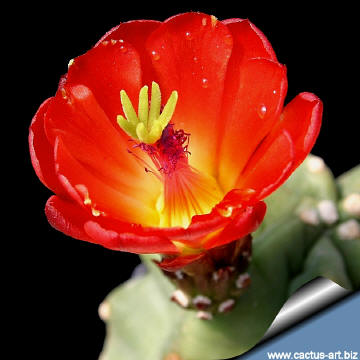
Very nice bright red flowers with green stigma. |
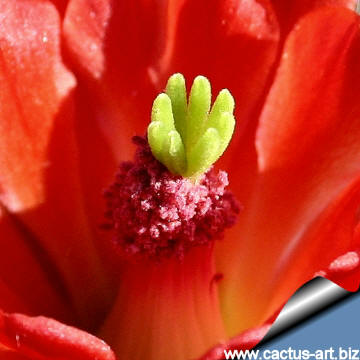
Stigma (green) and stamens (violet)
|
|
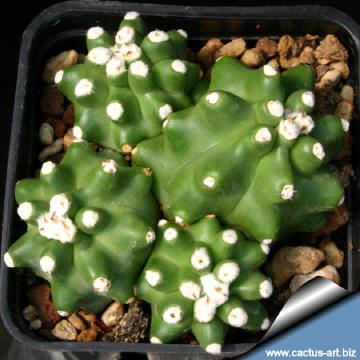
E. triglochidiatus var mohavensis "inermis" |
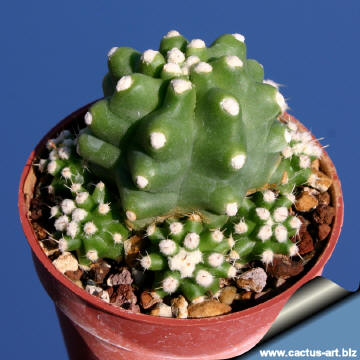
E. triglochidiatus var mohavensis "inermis" |
|
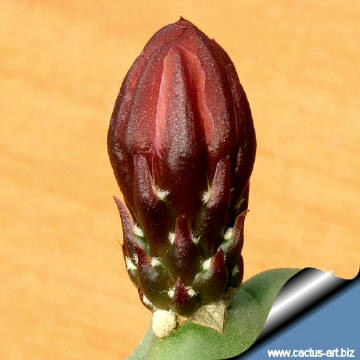 |
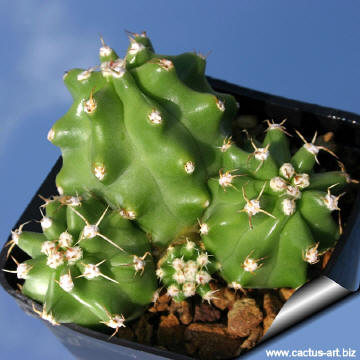 |
|
The bud don't develops from the areoles but start growing within
the plants body and breaks the epidermis as it enlarge.
|
|
Advertising
|
|
|
|
|
Family:
Cactaceae (Cactus
Family)
Echinocereus
triglochidiatus “inermis” (= subnudus)
Scientific name: Echinocereus triglochidiatus
Engelmann 1858
Origin:
E. triglochidiatus is the most widespread
species (Utah, and Colorado south to southern California, Arizona, New
Mexico, Texas, and Mexico)
Conservation status:
Listed in
CITES appendix 2.
Synonyms:
- Echinocereus paucispinus var. triglochidiatus
Schumann 1896
- Cereus triglochidiatus Engelmann 1848
- Cereus gonacanthus
-
Echinocereus triglochidiatus var mohavensis "inermis"
Common Names: Claret-Cup Hedgehog , Kingcup cactus, mound cactus, King's
Crown Cactus, Spineless Hedgehog.
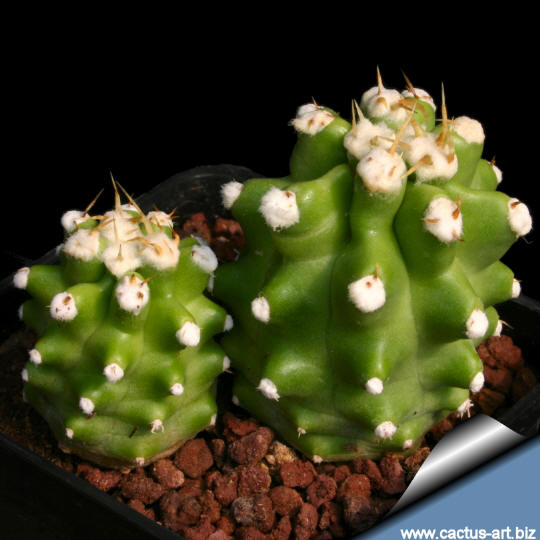
Echinocereus triglochidiatus
“subnudus”
HK 1040
Locality: Manzano, Torrance County, New Mexico, USA
|
|
|
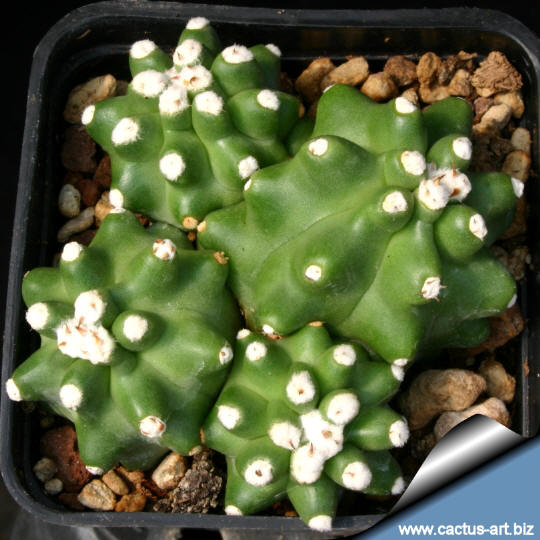
USE: Some Native
Americans collect the stems, burn off the spines and mash them.
Sugar is added and then it is baked to make sweet cakes.
Parts Used: pulp, flowers and stems
Cultivation:
This cactus is widely
cultivated for its flowers.
It is among the easiest species to grow,
flower and propagate.
Water regularly from March to October. Rot prone in winter, it needs good drainage. Claret Cups require strong sunlight to
maintain a healthy appearance, and a harsh "dry and cool" winter
environment combined with maximum light exposure enhances spring flower
production.
Frost Tolerance: It is very cold resistant, hardy
from -6° to - 18°
C for short periods of time (Depends on the
variety, some populations can
tolerate temperatures
down to -25° C or less.)
Propagation: Cutting as it produces abundant suckers; Also can be
grown from seeds.
Photo of conspecific taxa, varieties,
forms an cultivars of Echinocereus triglochidiatus.

 |
|